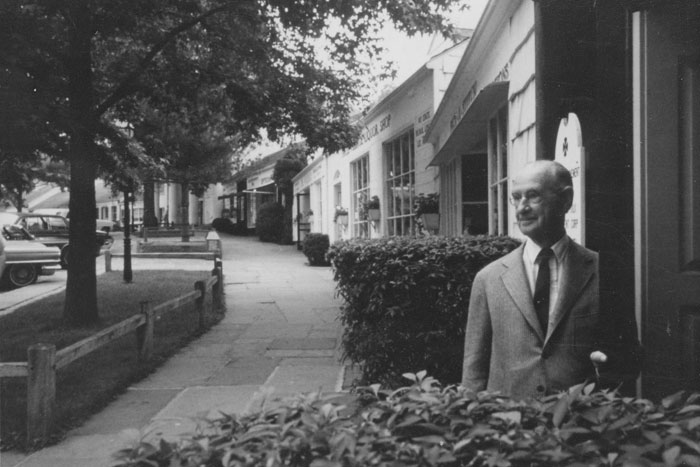Ward Melville: A Visionary for Yesterday, Today and Tomorrow

Long Island doesn’t lack for quaint little towns to visit. Unique stores and pleasant cafés abound, with nice places to sit and enjoy a beautiful day, and often small museums or historical societies to explore. But do we ever pause to consider the visionaries who planned and developed these treasured places that we enjoy today? “The Three Village area might never have been born if Frank and Jenny Melville, the parents of Ward Melville, didn’t get on the wrong train,” explains Gloria Rocchio, President of the Ward Melville Heritage Organization. “They thought they were headed to East Hampton and wound up in this area instead.” The Three Village area includes Stony Brook, Poquott, and all of Setauket. Rocchio, a fount of first-hand information, was an assistant to Dorothy Melville, Ward Melville’s wife—and Rocchio knew Ward Melville as well. Ward Melville created the quaint Stony Brook Village practically from scratch, making it a destination for visitors from across the Island.
How old is the Three Village area?
We will celebrate our 75th anniversary next year. On January 10, 1940, Ward Melville hosted a dinner for the town’s people at the Three Village Inn. He presented a model for the Stony Brook Village. Melville explained it would be built at his own expense and people could remain in their same locations. On January 10, 2016, we will hold a dinner featuring the same menu served on that fortuitous day.
What were Melville’s original plans for the village?
Melville was a philanthropist who dreamed of creating a living Williamsburg where history blended with the natural environment. The Village Center is crescent shaped, the center being a Federal-style post office with a wooden eagle that flaps its wings [on the hour]. The two-acre village green in front offers an open vista to the harbor allowing for magnificent views of the sunsets.
This sounds like a tremendous undertaking. How did he accomplish it?
Massive! It involved purchasing and restoring historic buildings, then relocating them. Other buildings were razed. Melville had one million cubic yards of dirt moved at his own expense. He built roads and communities. All the homes had a covenant that required them to be white with black shutters to give the look of a New England village.
When was the Village Center completed?
It was completed on December 7, 1941, Pearl Harbor Day, and has been recognized as the first planned business community in the United States. He built the Old Field Club to give people a social life out here. He was truly the Robert Moses of the north shore.
What else did Ward Melville do to bring culture to the area?
He built the Carriage Museum in 1950, the Art Museum in early ’60s and the History Museum in the late 60’s. The Suffolk Museum, which is now the location of the Jazz Loft on Christian Avenue, was built in 1940 by Ward Melville and founded by Dorothy. They constructed Dogwood Hollow, an amphitheater that opened the summer of 1951 offering concerts and festivals. It closed then reopened several times until the early ’70s.
Was Stony Brook University part of Ward Melville’s dream?
Yes, Melville lobbied to bring the university to Stony Brook from Oyster Bay. He contributed over 400 acres of land and money to New York State for the project and founded Stony Brook University in 1957. Melville served as Council for the university for some time. The main library on campus is named after his father, Frank Melville Jr. The university is a major public research institution specializing in medicine and science.
What about the school district?
Melville developed land for the high school named after him and he served as a member of the school board.
What future plans does the organization have to promote cultural here?
The Jazz Loft will open this year at the site of the Stony Brook Fire Department and the Suffolk Museum. It will be rich with jazz concerts and memorabilia. This is just another example of carrying out Ward Melville’s dream to bring culture to this village.
When did Ward Melville die?
Melville died in 1977 and is buried in Setauket. Dorothy died in 1989 at 95 years of age.
For more information, visit wmho.org.



